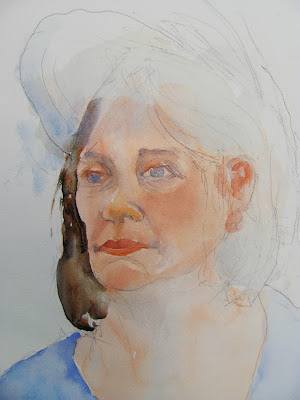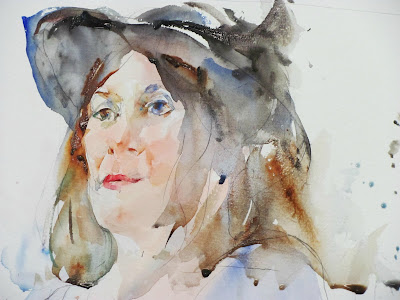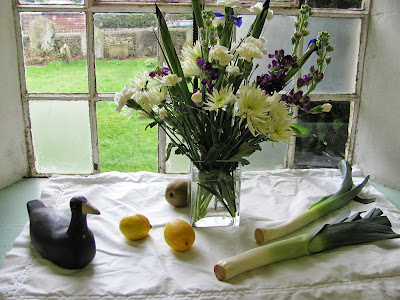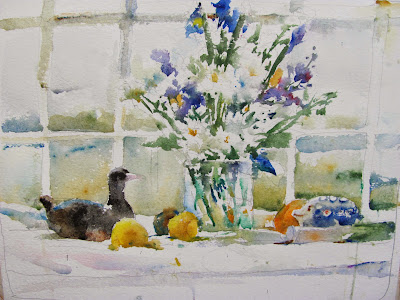Well it's over, my fifth and possibly final Charles Reid workshop in 6 years. I only intended to go to one originally but kept coming back for more. Why the final one? Charles is only coming to the UK every two years so the next one would be in 2015, when we will all be two years older. Age is something I'm becoming more conscious of, even though my father was almost 96 before he departed. Will Charles and Judy come again? When I said goodbye to him his words were `see you again' so who knows.
This workshop was different to the others in that it was not residential. This was due to increasing insurance costs which rapidly increase as we get older and that was the case here. Jane Duke, who has organized Charles Workshops in the UK in the last few years, told me 2015 hadn't been mentioned although he was going to Italy in 2014. With all the travelling involved throughout the United States and abroad it must be very tiring for Charles and Judy, as I well know, Charles and I being very close in age. As the students were aware that Charles, Jane and Judy were staying at the Grapevine Hotel six also elected to do so, eleven more spread around various other hotels and B & B's in Stow. As I had free board and lodging with my sister a short drive away it was no contest, although as a result I partially missed out on the social side of the workshop. Charles seemed to me not quite his old self on the first four days, although his paintings were as good and exciting as ever. That's one of the great things about artists - their painting skills never seem to leave them. The week after Stow was Burford and Genevieve Buchanan was there - I had met her previously - and she tells me it was excellent. By now Charles will have finished filming the DVD at Burford with Town House Films, and I imagine he and Judy will be back home. I gather it will be called `Cotswold Sketches'.
On previous workshops on the last evening an exhibition was held of the students paintings, to which any other residents and staff were welcome to visit. This enabled me to photograph them but that wasn't an option here and I apologize for that omission. Instead you will have to make do with my modest efforts. In previous reports I've said I was unhappy with my paintings. I had hoped to go out in a blaze of glory but it wasn't to be.
I abandoned this one as I was unhappy with my handling of the greens above the rim of the vase.
This was average but inferior to the one hanging in my studio, painted at Urchfont (now sold to a private owner) four years previously, again the greens poorly handled..
The plein air study painted on the second day. I have detailed Charles remarks about it earlier.
This was my third attempt, another unsatisfactory result.
After these tales of woe I determined to do better on the final day, which was the portrait session. It was my turn to be on the front row for the demonstration, along with three others, and this carried over in positioning ourselves when we painted Jane.
You can see what an advantage I had regarding position.
The initial drawing
40 x 50cm Schut Noblesse 140 lb (300gsm) Not
When home I made some small changes, one being the left hand line of the face, otherwise I was pretty pleased with it, especially given my previous efforts. Strangely enough I thought Charles seemed much more like his old self on the final day, but perhaps it was me who perked up.
Did I learn from this workshop? I'm sure I did as it reinforced a number of things where I'd regressed and also refreshed me despite the aforementioned difficulties. When I've had more time to digest this workshop, and it's lessons, I may return to the subject. For now that's it folks I'm exhausted!


















































